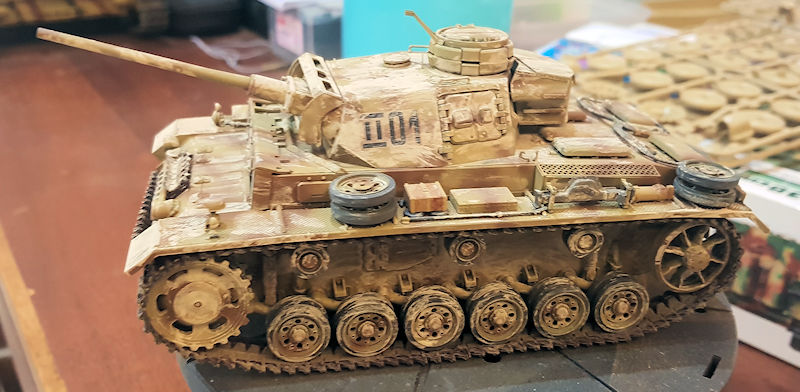Quoted Text
Thanks Peter!
Are the three colors you mentioned mixed, or used separately?
Gaz
I use all three and on all surfaces, but I use more of one colour depending on the surface. The darker colour is the first one I listed, I use that first. Then the middle colour selectively on areas that would get a little more light, say the sides of the superstructure, etc. Then the last on areas like the hull top, fender tops, etc.
I use the darker colour for pin washes, but mix a bit of the middle colour in to vary the shade a little instead of having one continuous colour in the pin wash.
The trick is keep it thin and the area you are painting moist to draw the paint along. That way you avoid tide marks where the acrylic pools, although a little tide mark here and there can be good where water would pool on a vehicle naturally after rain, etc.
Here are some pics of the Diana. Remember I have also done dirt and dust streaks on this, but you can still see the wash in areas and how there are slightly different colour patches, You can also see where the cab has a slightly darker finish to the fighting compartment sides to avoid mono tone.
Darker colour on the inside of the fenders facing the engine compartment, the areas closer to the cab compartment and the bottom of the engine and cab, then middle colour on the areas of the fender facing outwards, the centre area of the cab and Engine covers, with the lighter colour on top and over the tops of the fenders, etc.

The outer road wheels have the darker colour in the centre area, the medium colour to the top section and the lower colour on the bottom section - all so thin you can only just get the hint of change.













































